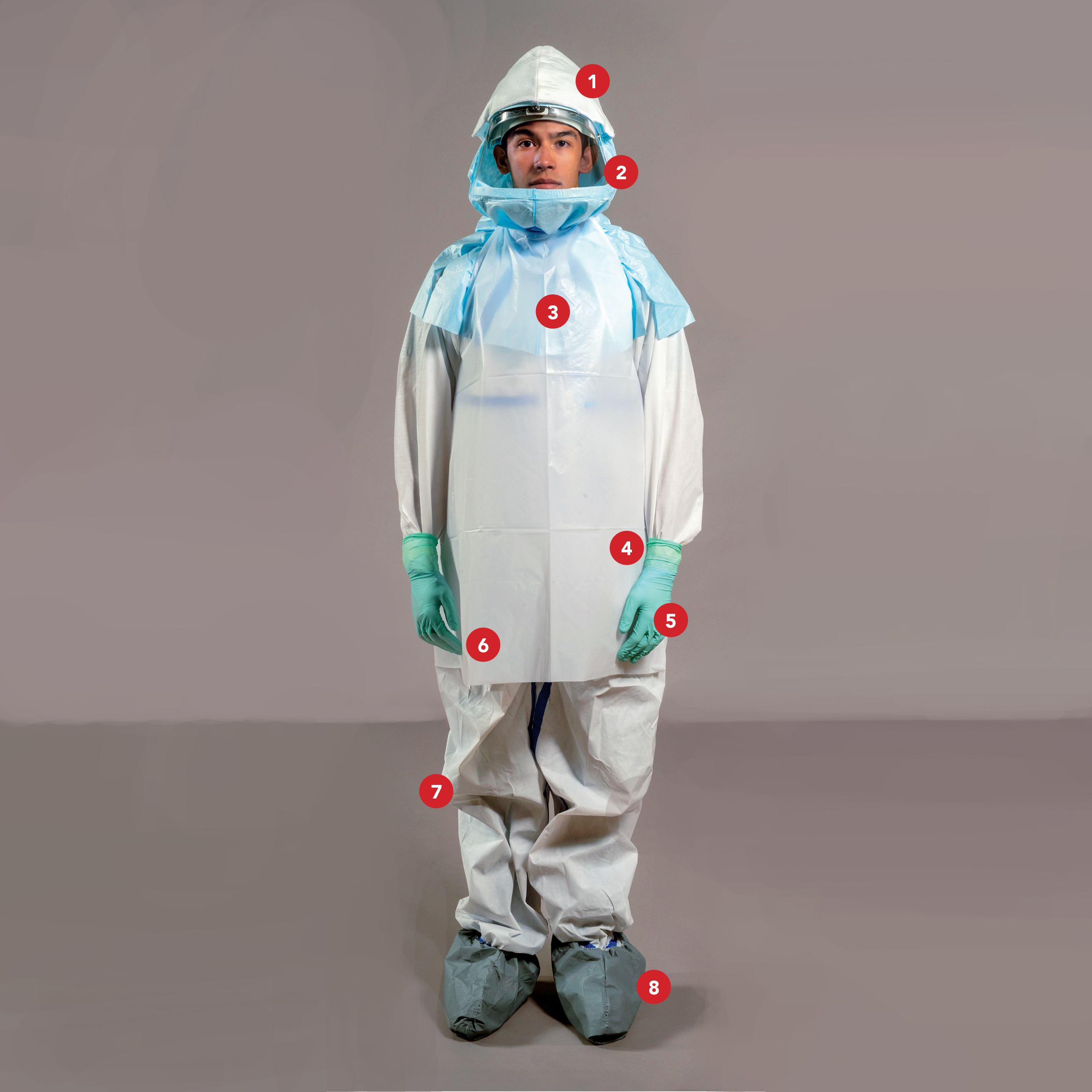Suiting up: The nuts and bolts
The personal protective equipment (PPE) is the most visible sign of infection transmission control. The Ebola team at Emory wore this suit during its treatment of the four patients in 2014. The Centers for Disease Control and Prevention now recommends this higher level of precaution when caring for patients with Ebola.
Suit Yourself
Personal Protective Equipment (PPE) suits are standard issue for medical team members working in Emory Hospital's Serious Communicable Diseases Unit with patients who have Ebola, Lassa, or other deadly infectious diseases.
- A powered air purifying respirator (PAPR) is used to keep the user from inhaling viral particles.
- A faceguard is needed for certain viruses to keep fluids from being splashed into the user's eyes, nose, or mouth.
- After being taken off, PPE must be treated as biohazardous waste and go through a decontamination process before being safely discarded.
- PPE are made of ultra-strong, waterproof synthetic material that won't easily rip or tear.
- Double gloving is standard--a tiny hole would be enough to let in the virus.
- PPE must completely cover the clothing and skin to protect mucous membranes and broken skin.
- Procedures for donning and doffing (taking on and off) PPE are detailed and essential. A trained colleague watches to make sure a step isn't forgotten.
- Disposable booties are worn anytime a medical team member enters the special isolation unit.
